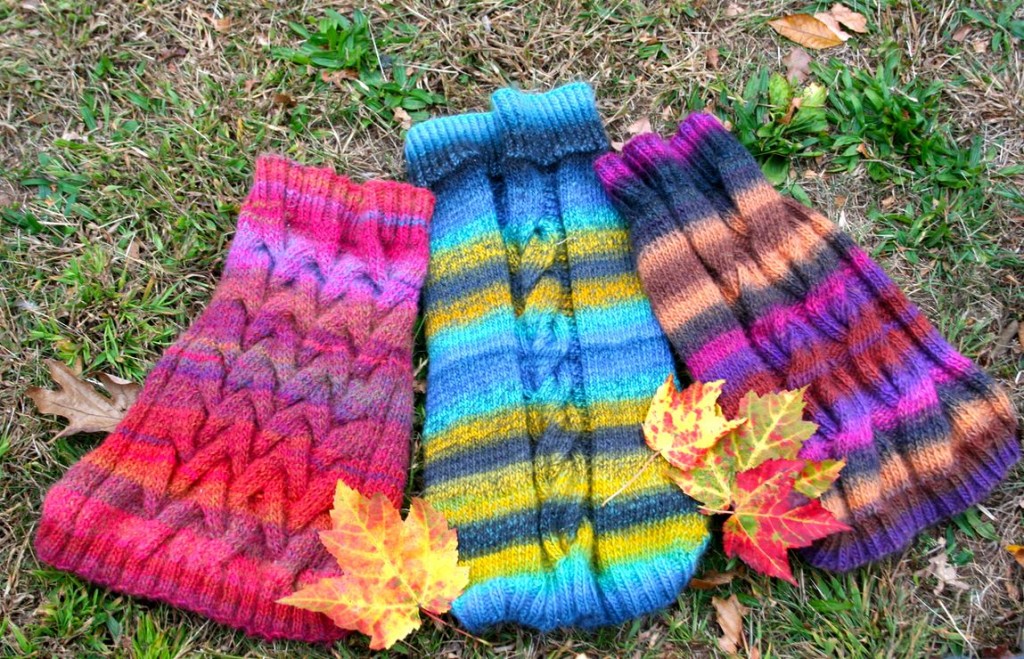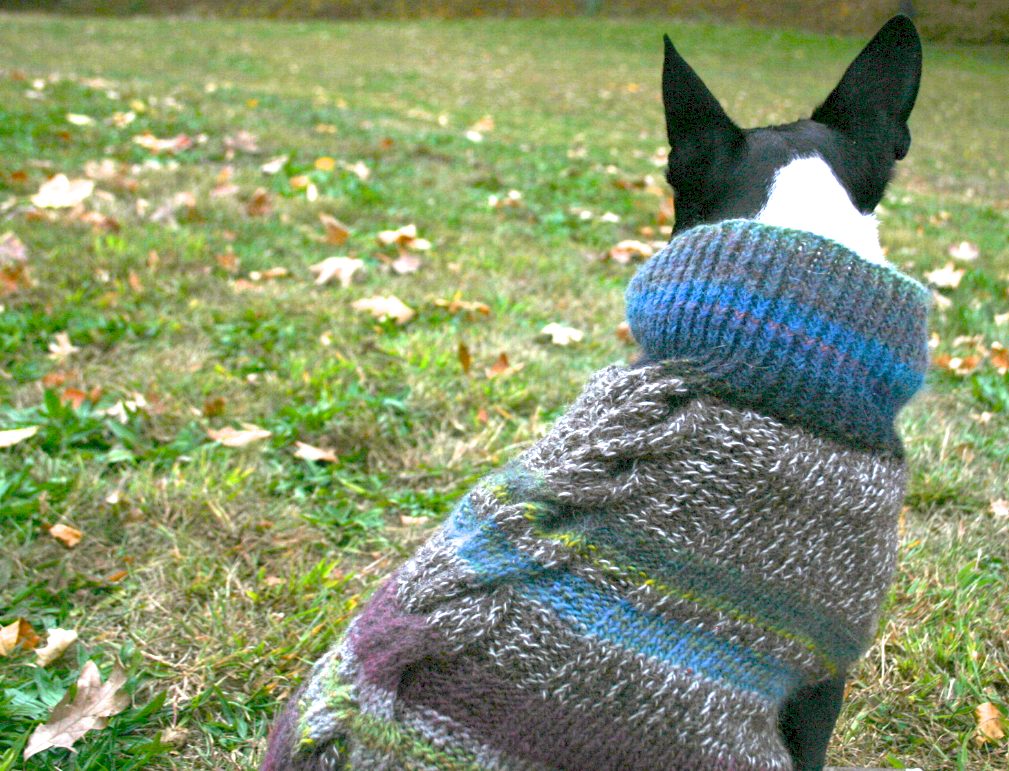What do dinosaur tracks have to do with knitting? Well, while out walking inspiration may be found in odd places. The Connecticut River Valley offers an astounding number of dinosaur footprint trackways – the fossil prints create patterns and are mute evidence of life long vanished from the earth.

Color-shifting yarns and track-like pattern variations inspired by dinosaur footprints captured in the sediments of time.
For a knitter, add stitch patterns to color and fiber and what results is nearly endless combinations. Mix in a passion for cabling and what results is a fiber canvas – that is both useful and wearable as experiments are knit and tracked in a large and medium Boston terrier size.
The Northeast is known for changeable weather and hardy souls who like a challenge. Cold weather walks require natural fibers that are warm, durable – and since the landscape goes monochrome for about half of a year – add some pigment. Which has lead to a pursuit of how color originates and is used – natural dyes, hues hidden in plant material, insects, lichens, trees. Living in this region is a boon in other ways. Access to major (and smaller) fiber festivals (see “Fiber Festivals, Events & Resources” page) provide yarn, patterns, networking, tools, and the camaraderie of a knitting-fiber arts community.
But that’s another story. A rift valley that once featured tropical weather eons ago inspired a series about patterns and explorations with yarn and knitting. And then, a new cabled stitch.



